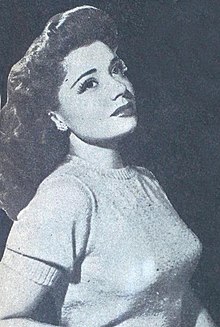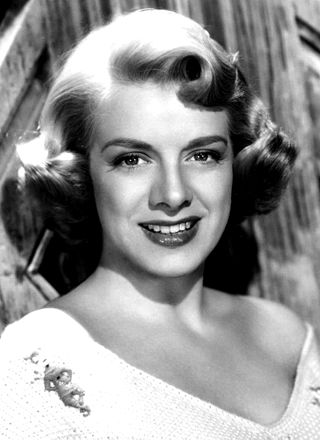
Rose M. Clooney was an American singer and actress. She came to prominence in the early 1950s with the song "Come On-a My House", which was followed by other pop numbers such as "Botch-a-Me", "Mambo Italiano", "Tenderly", "Half as Much", "Hey There", "This Ole House", and "Sway". She also had success as a jazz vocalist. Clooney's career languished in the 1960s, partly because of problems related to depression and drug addiction, but revived in 1977, when her White Christmas co-star Bing Crosby asked her to appear with him at a show marking his 50th anniversary in show business. She continued recording until her death in 2002.

Jane Powell was an American actress, singer, and dancer who appeared in Metro-Goldwyn-Mayer musicals in the 1940s and 50s. With her soprano voice and girl-next-door image, Powell appeared in films, television and on the stage, performing in the musicals A Date with Judy (1948), Royal Wedding (1951), Seven Brides for Seven Brothers (1954), and Hit the Deck (1955).

David Daniel Rose was a British-born American songwriter, composer, arranger, pianist, and orchestra leader. His best known compositions were "The Stripper", "Holiday for Strings", and "Calypso Melody". He also wrote music for many television series, including It's a Great Life, The Tony Martin Show, Little House on the Prairie, Highway to Heaven, Bonanza, Leave It to Beaver, and Highway Patrol, some under the pseudonym Ray Llewellyn.
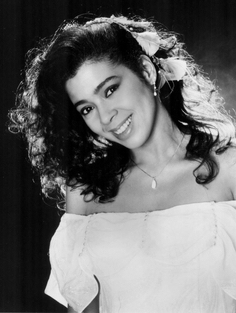
Irene Cara Escalera was an American singer and actress who rose to prominence for her role as Coco Hernandez in the 1980 musical film Fame, and for recording the film's title song "Fame", which reached No. 1 in several countries. In 1983, Cara co-wrote and sang the song "Flashdance... What a Feeling", for which she shared an Academy Award for Best Original Song and won a Grammy Award for Best Female Pop Vocal Performance in 1984.

Lorna Luft is an American actress and singer. She is the daughter of Judy Garland and Sidney Luft, the sister of Joey Luft and the half-sister of Liza Minnelli.
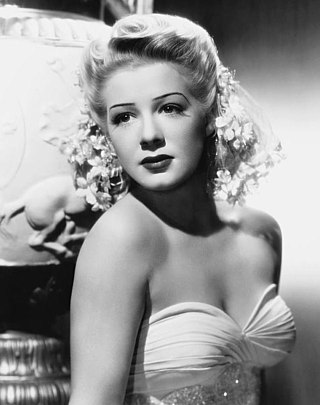
Betty Hutton was an American stage, film, and television actress, comedian, dancer, and singer. She rose to fame in the 1940s as a contract player for Paramount Pictures, appearing primarily in musicals and became one of the studio's most valuable stars. She was noted for her energetic performance style.
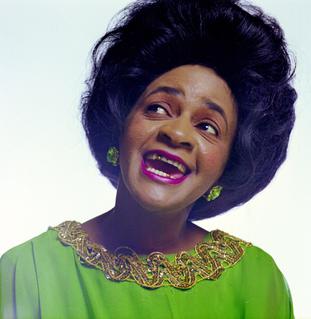
Clara Mae Ward was an American gospel singer who achieved great artistic and commercial success during the 1940s and 1950s, as leader of the Famous Ward Singers. A gifted singer and arranger, Ward adopted the lead-switching style, previously used primarily by male gospel quartets, creating opportunities for spontaneous improvisation and vamping by each member of the group, while giving virtuoso singers such as Marion Williams the opportunity to perform the lead vocal in songs such as "Surely, God Is Able", "How I Got Over" and "Packin' Up".

Kay Thompson was an American author, singer, vocal arranger, vocal coach, composer, musician, dancer, actress, and choreographer. She became famous for creating the Eloise children's books and for her role in the movie Funny Face.

Beatrice Ruth Wain was an American Big Band-era singer and radio personality born in the Bronx, New York City. She had several hits with Larry Clinton and His Orchestra, including "My Reverie", "Deep Purple", and "Heart and Soul". Wain and announcer Andre Baruch, her husband, co-hosted radio programs from the 1940s to the 1980s.
Mort Lindsey was an orchestrator, composer, pianist, conductor and musical director for Judy Garland, Barbra Streisand, Pat Boone, Jack Narz, and Merv Griffin.

Dorothy Collins was a Canadian-American singer, actress, and recording artist.

Roy Landman, better known as Snooky Lanson, was an American singer known for co-starring on the NBC television series Your Hit Parade.

Lucille Norman was an American mezzo-soprano, radio personality, and stage and film actress active in the 1940s and 1950s.
Marjorie Hughes is an American singer.
Marilyn Erskine is an American actress who started performing at the age of three on radio, and has since appeared in radio, theater, film and television roles from the 1920s through the 1970s.

Betty Clooney was an American singer, TV presenter and pioneer who briefly rose to fame in the 1950s with her sister Rosemary Clooney. She led a very brief solo career, with songs like "Kiki" and "You're All I See". She married actor and musician Pupi Campo in 1955, and they had four children.

Eugenie Baird was an American big-band, jazz, and radio singer.

Joy Hodges was an American singer and actress who performed on radio, on film, on Broadway, and with big bands.

Margherita Maria Francesca LaCentra was an American contralto singer, best known for her work on old-time radio and her singing with Artie Shaw's orchestra. She also performed as Barbara Fulton.
The Judy Canova Show is an American old-time radio comedy-variety program. It was broadcast on CBS July 6, 1943 – June 27, 1944, and on NBC January 13, 1945 – June 30, 1951, and December 29, 1951 – May 28, 1953. Each version differed from the others to some extent, although comedy and music remained the focal points. The program is notable for being the medium in which Judy Canova found her greatest success.
